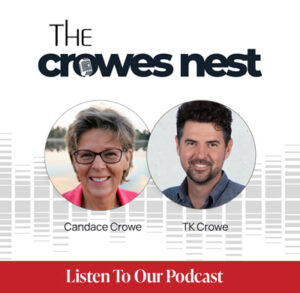The year was 1999 and Dr. Barry Boyd became my first plastic surgery client. So I went to the library to see what books I could find on plastic surgery. Orlando Public library. At that time there were just 11 books total. I walked out with that stack of books and read them each cover to cover. It was kind of a magical time for plastic surgery. Before TV shows and celebrity stars other than Joan Rivers, that even admitted they had it done.
There was nothing on the internet then; especially not before and after photos. Before and after photos were shown in the practice not the internet. It was usually the patient-to-be sitting with the doctor’s wife or nurse talking about the before and afters. Most often, the story of the patient behind the before and afters was talked about as they went through the photo albums.
As physicians, and those who work with physicians, we are taught to be clinical, unemotional, and science based. But, as human beings we are indeed emotional. In fact, quoting Supreme Court Justice William O. Douglas, “… 90% of any decision is emotional.”
We have been taught to take clinical photos and use them in our marketing. I pose the question, just how well is that working, and could we achieve better communication and expectations by telling stories?
As human-beings, we are drawn to storytelling. The basic plot of storytelling is… a character (Luke Skywalker) meets a guide (Yoda) that helps creates a plan of action that allows the character to avoid failure and enjoy success.
Take a look at this set of before and afters. Our mind can’t help but to try to fill in the in-between. Puppy was found abandoned on the sidewalk. Adopted by a wonderful family. It just feels good and you want to read more.
Before and after photos can build confidence. I have an employee who had her baby prematurely. It was their first child. To have a first baby is quite the deal but to have it 7 weeks early can be a bit to handle. The neonatal wing of the hospital knew the power of storytelling and lined the halls with positive reinforcement of premature babies who grew up to live wonderful lives.
Today, before and after galleries are the most visited pages of practically every website. Most of these galleries focus on clinical photos, case descriptions and what Google uses to rank pages. This is all good but what about the patient experience?
I’m a practical person, who wants to make the maximum use of my time and money so here are a few ideas to use in your marketing and start telling stories that patients relate to.
In this example, I’ve used a couple of photos that have been creatively composed with a couple of words from the patient and a pretty, fully dressed mommy and child snapshot.
Here’s another creative twist any practice can do. Use a chalkboard, draw a cute before illustration on it then take the patient’s photo in everyday clothes in front of it.
We wear clothes most of the time. It’s nice to look great naked but it’s great to look and feel sexy, confident and attractive in clothes. Perhaps they’ve been in a wedding or attended a special event where a professional photographer took some photos they’d like to share with you. Just like asking for a review, ask your patients to send you their after photos. Don’t be afraid to ask.
For showing clinical photos in the practice, I recommend using BRAG book on an iPad or tablet. With the pinch and zoom feature, the viewer can easily see fine lines and faded scars. Being able to hold the gallery in their lap and sit next to them as you talk about what the patient wants to achieve helps set expectations and gain trust.
Most often “walk through” patients are forgotten. The ones who physically visit your practice. These are the most important of all because they are the most interested in what you have to offer them. Even just a fleeting glance at the right time has influence. Digital signage (Advantage Play link) on a TV can educate and provoke thoughtful interactions between the patient and staff.
You make people’s lives better by helping them feel better about themselves. Before and after stories are your proof. Storytelling is the way to help your patients.




